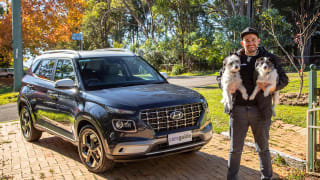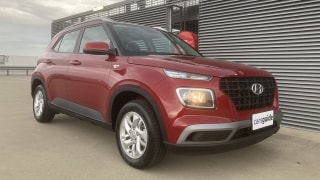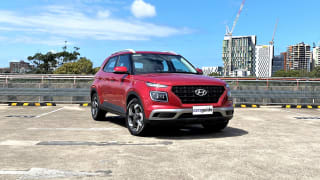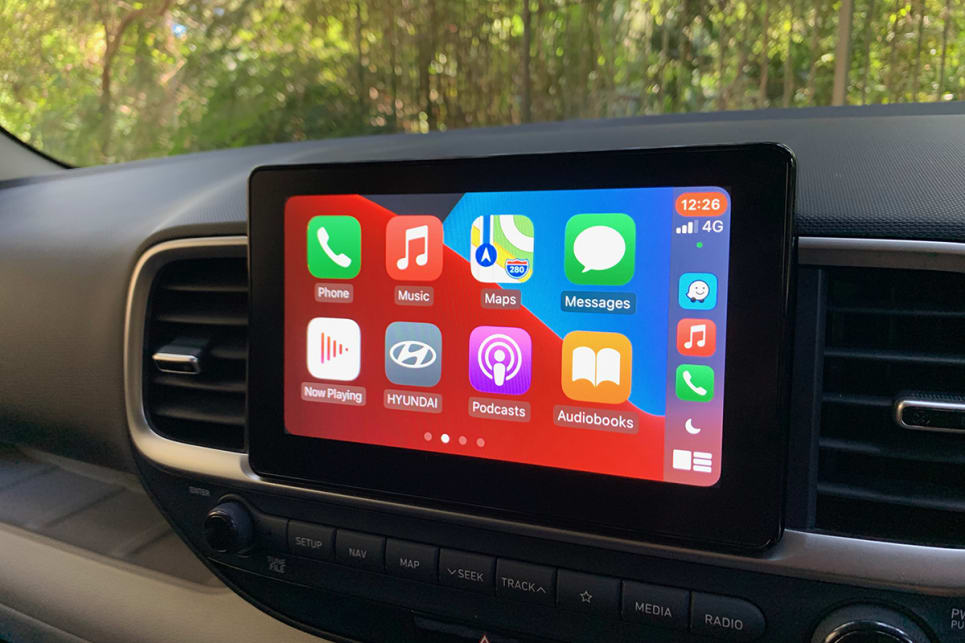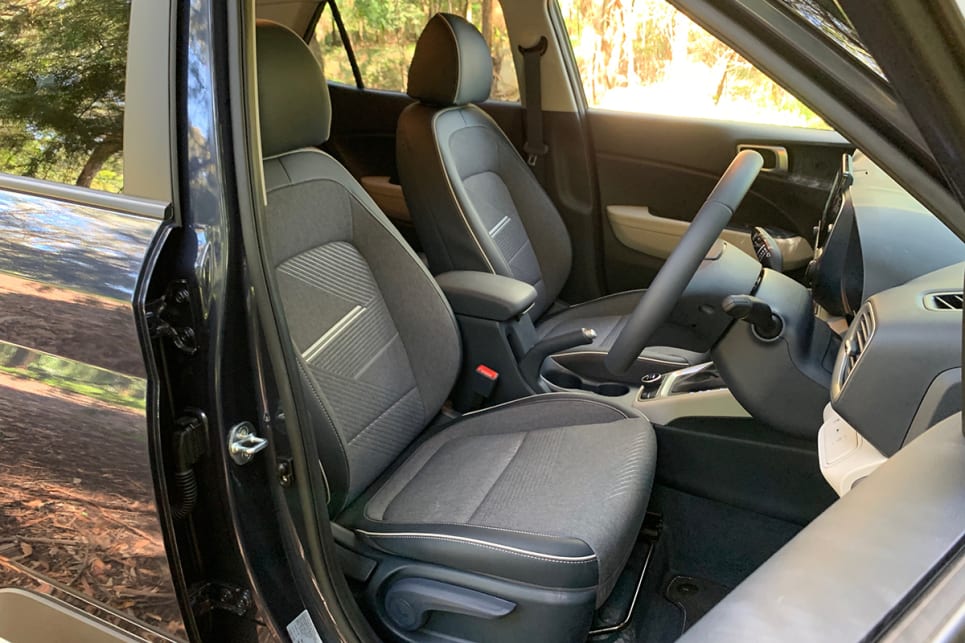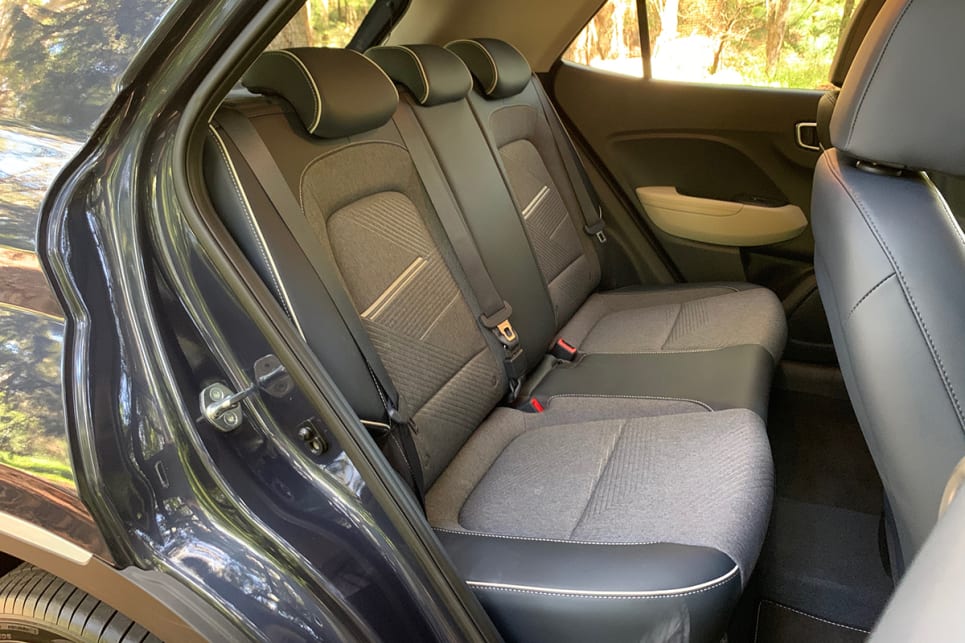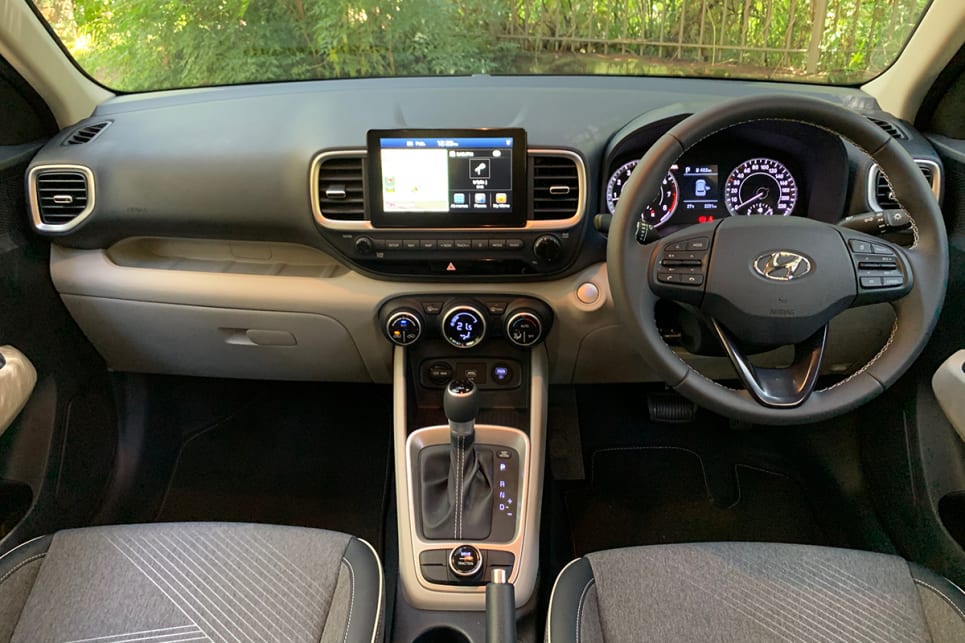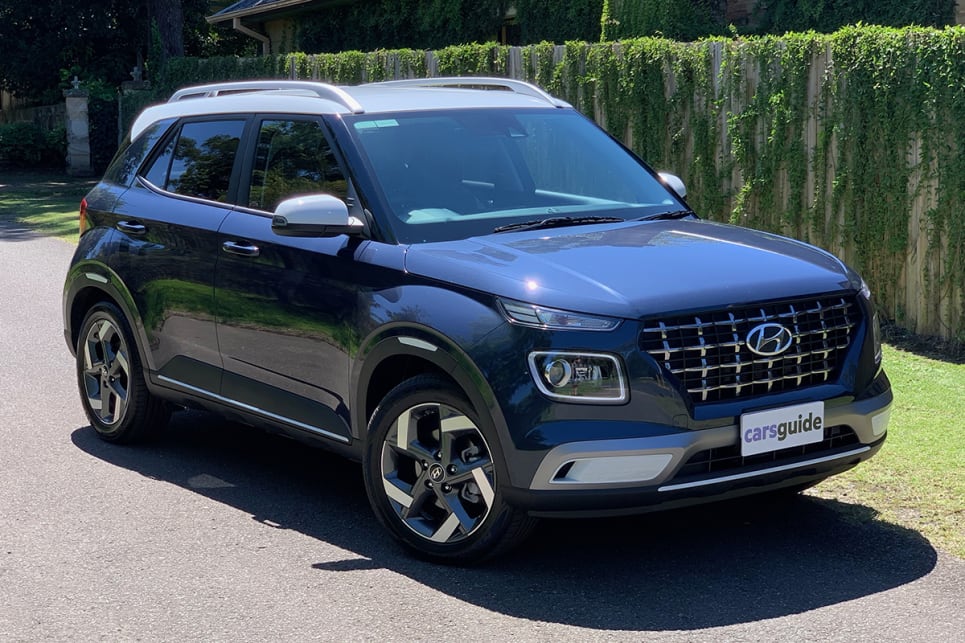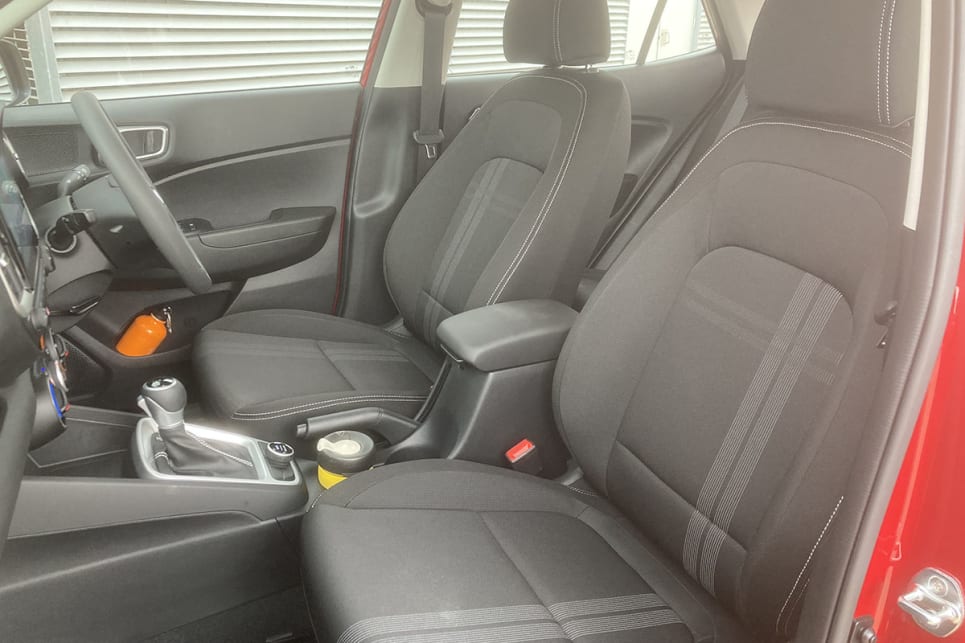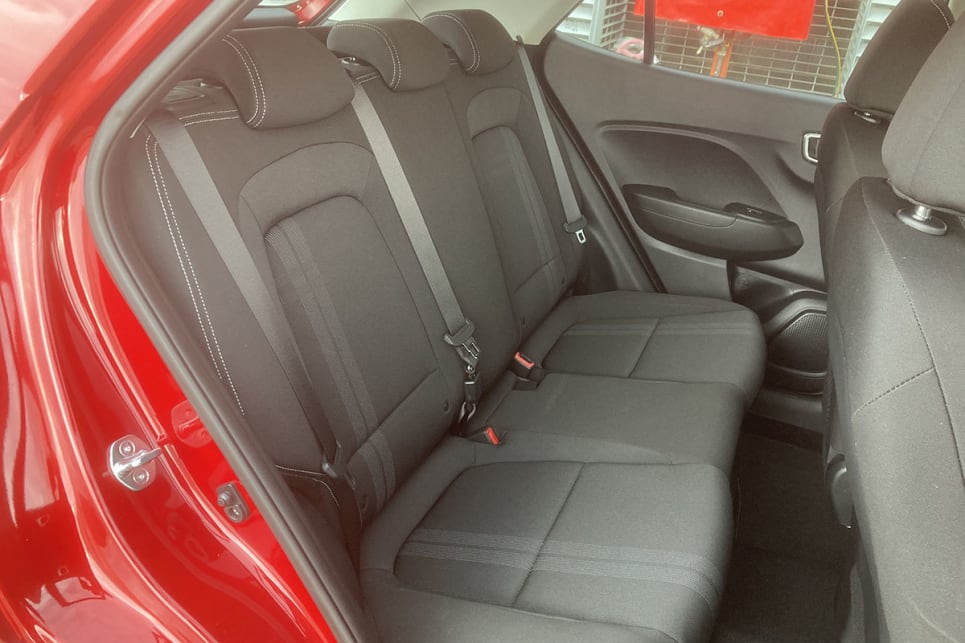
What's on this page
Hyundai Venue 2021
Carsguide Managing Editor - Head of Video Matt Campbell had this to say at the time: The Hyundai Venue Elite is an intriguing, well designed and smartly packaged small SUV that is going to suit buyers who value those things over acceleration performance or advanced safety tech.
You can read the full review here.This is what Matt Campbell liked most about this particular version of the Hyundai Venue: Great size, Interesting looks inside and out, Well packaged
The 2021 Hyundai Venue carries a braked towing capacity of up to 1100 Kg, but check to ensure this applies to the configuration you're considering.
Hyundai Venue 2021 News

Top EOFY 2021 new car deals: Mazda, Hyundai, Kia, Nissan and Ford commit to discounts despite stock shortages

2021 Hyundai Venue pricing and specs detailed: Cost up for Mazda CX-3, Toyota Yaris Cross, Volkswagen T-Cross, Kia Stoni, Ford Puma rival
Hyundai Venue 2021 Price and Specs
Pricing guides

| Hyundai Venue Model | Body Type | Specs | Price from | Price to | |
|---|---|---|---|---|---|
| Active | SUV | 1.6L ULP 6 SP AUTO | $20,900 | $26,510 | |
| Active | SUV | 1.6L ULP 6 SP MAN | $17,050 | $21,890 | |
| (base) | SUV | 1.6L ULP 6 SP AUTO | $19,250 | $24,420 | |
| (base) | SUV | 1.6L ULP 6 SP MAN | $17,600 | $22,220 | |
Hyundai Venue 2021 Interior
The interior of the Hyundai Venue is amazingly practical for the size of this light SUV. It's smaller than small on the outside, but manages to be big enough inside to fit four adults (at a squeeze), while the boot is bigger than plenty of rival small cars, at 355L.
Hyundai Venue 2021 Colours
The Venue is available in the following colours: Cosmic Grey, Phantom Black, Blue Denim, Intense Blue, Polar White, Typhoon Silver and Fiery Red.
- Cosmic Grey
- Phantom Black
- Blue Denim
- Intense Blue
- Polar White
- Typhoon Silver
- Fiery Red
Hyundai Venue 2021 Dimensions
Dimensions for the 2021 Hyundai Venue are dependent on which body type is chosen. The maximum width and height is 1770mm x 1592mm and can vary on the basis of model.

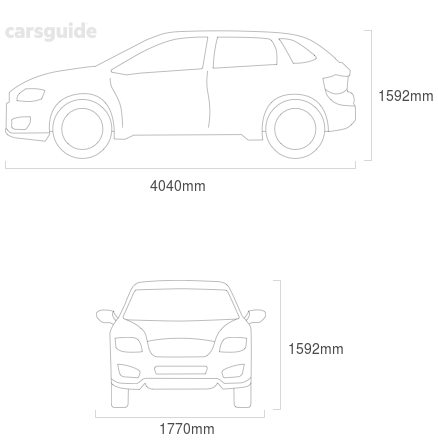
| Hyundai Venue Model | Body Type | Height x Width x Length | Ground Clearance | |
|---|---|---|---|---|
| base | SUV | 1592x1770x4040 mm | 170 mm | |
| Active | SUV | 1592x1770x4040 mm | 170 mm | |
| Elite (denim Interior) | SUV | 1592x1770x4040 mm | 170 mm | |
| Elite (black Interior) | SUV | 1592x1770x4040 mm | 170 mm | |
Hyundai Venue 2021 Accessories
The Hyundai Venue Elite offers customers the choice between a two-tone roof finish, or a sunroof. That might be a tough call for some people. You can't have both... unless you get the car with the sunroof, and get the roof section painted or wrapped at a later date.
Hyundai Venue 2021 Boot Space
One of the Venue’s best features is its big, square boot, measuring in at a generous 355 litres (VDA). A space-saver spare is located underneath the load area.
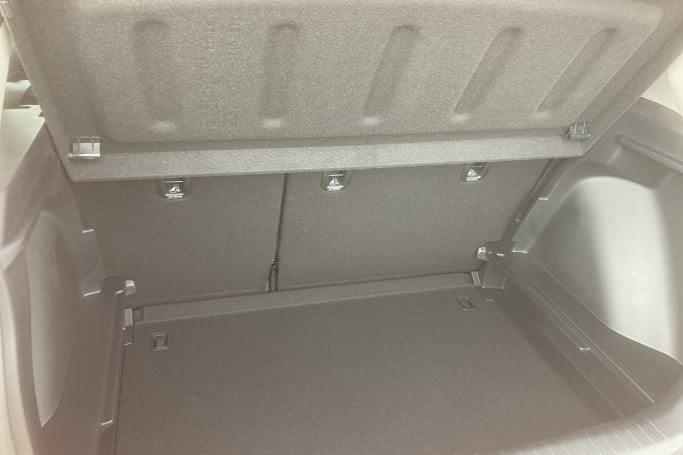
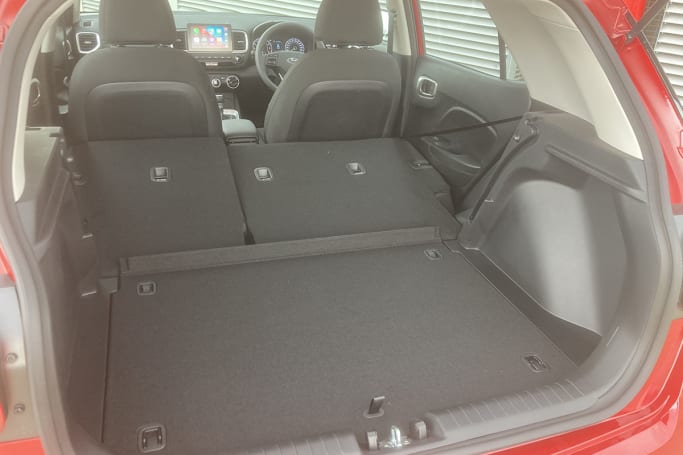
Hyundai Venue 2021 Fuel consumption
Fuel consumption for the 2021 Hyundai Venue is dependent on the type of engine, transmission, or model chosen. The Hyundai Venue currently offers fuel consumption from 7 to 7.2L/100km. The Hyundai Venue is available with the following fuel type: ULP.
| Hyundai Venue Model | Body Type | Specs | Fuel Consumption | |
|---|---|---|---|---|
| Active | SUV | 1.6L,ULP,6 SP MAN | 7L/100km | |
| Active | SUV | 1.6L,ULP,6 SP AUTO | 7.2L/100km | |
| base | SUV | 1.6L,ULP,6 SP MAN | 7L/100km | |
| base | SUV | 1.6L,ULP,6 SP AUTO | 7.2L/100km | |
Hyundai Venue 2021 Q&As
Check out real-world situations relating to the Hyundai Venue here, particularly what our experts have to say about them.
-
Who is responsible to help resolve issues with my 2019 Hyundai Venue?
You’re on the right track with this approach. Fundamentally, you need to give the dealer (and manufacturer) the opportunity to put things right. That means giving the dealer access to the vehicle, even though that’s obviously inconvenient for you. A switched on dealership will, where possible, offer you a replacement vehicle while yours is being worked on, too.
Only when the manufacturer and dealer have told you there’s nothing that they can do should you approach the ACCC or other statutory body with your request for a refund or a new vehicle to replace the one that can’t be fixed. While ever the dealer is making an attempt to fix things, it’s wise to give them the access to do so.
For what it’s worth, the problem is likely to be something to do with the car’s body computer which is playing up and not allowing the central locking to work, while also allowing the battery to drain. What looks like a faulty battery can often be traced back to a body computer problem, particularly when the central locking is involved.
Show more -
Which small SUV should I buy to replace my Hyundai Tucson?
Boy, the world is your oyster, Elizabeth. There are literally dozens of options when it comes to a compact SUV. If you’re otherwise happy with the Hyundai, then maybe look at the Hyundai Kona. It’s available as a turbo all-wheel-drive or as a non-turbo front-drive car (not to mention the Kona Electric, an all-electric version) and will come with Hyundai’s great factory warranty and reliability that you’ve already experienced with the Tucson. The other option would the equivalent from Hyundai’s sister company, Kia. The Kia Sportage an also be had as a turbo-diesel, although for normal suburban driving, a petrol is probably your best bet.
Then, you have all the various offerings from the Japanese makers as well as left-field entrants from MG, Fiat, Mini and more. But you need to be careful, because there isn’t always a whole lot of difference between the width of a compact SUV and a mid-sizer. Sure, there’s generally more space inside the bigger car, but it’s often the result of extra length and height rather than width. For instance, your Tucson (assuming it’s the current model) has a width of 1850mm while the Kona is just 50mm (about two inches) narrower. That may not be enough of a difference and you may need to go down two sizes to, say, a Hyundai Venue which is smaller and narrower again with a width of 1770mm.
Show more -
What are the pros and cons of a 2018 MG ZS?
ZS pros include cheap pricing, an easy driving experience and a comparatively spacious interior compared to other direct rivals like a Mazda CX-3. The dash is pleasant, there is a decent amount of equipment and the controls are all simple to use. It should also be fairly inexpensive to run and service, though earlier ZSs like yours require six-monthly rather than 12-monthly service intervals.
There are two engine options - a 1.5-litre four-cylinder model with a four-speed auto on the base Excite, or a 1.0-litre turbo three-cylinder version on higher-specification Excite Plus and Essence grades with a six-speed auto. Note that the latter powertrain is more expensive to service.
Plus, there's still a fair chunk of the manufacturer's warranty left, which is seven years, while capped-price servicing is also offered.
But the ZS does not offer AEB Autonomous Emergency Braking, so only rates a four-star ANCAP crash-test rating.
Additionally, the ZS's suspension is on the firm side in terms of dealing with road bumps, which might upset some occupants, yet there is not much of the 'fun factor' in regards to steering and handling finesse that rivals like the CX-3, Suzuki Vitara, Honda HR-V, Hyundai Venue, Holden Trax, Ford EcoSport and Hyundai Kona offer in spades.
We've also heard complaints about the interior's perceived quality being sub-par, cabin storage isn't generous and Android Auto isn't supported (though Apple CarPlay is).
Finally, the ZS' resale value trails all of the aforementioned competitors by a significant margin, meaning it's on track to be worth less when the time comes to on-sell it.
Show more
Hyundai Venue 2021 Wheel size
Wheel size for the 2021 Hyundai Venue will vary depending on model chosen, although keep in mind that many manufacturers offer alternate wheel sizes as options on many models.The wheel size available will alter the range of tyres available to be fitted.
| Hyundai Venue Model | Body Type | Front Tyre Size | Front Rim | Rear Tyre Size | Rear Rim | |
|---|---|---|---|---|---|---|
| base | SUV | 185x65 R15 8 | — | 185x65 R15 8 | — | |
| Active | SUV | 205x55 R17 9 | — | 205x55 R17 9 | — | |
| Elite (denim Interior) | SUV | 205x55 R17 9 | — | 205x55 R17 9 | — | |
| Elite (black Interior) | SUV | 205x55 R17 9 | — | 205x55 R17 9 | — | |
Hyundai Venue 2021 Towing capacity
The Hyundai Venue’s towing capacity ranges from 800kg to 1100kg. Some models also offer heavy-duty or towing option packs which can increase towing capacity, as well as options which can hamper towing capacity. Towing capacities can vary wildly on a large number of factors. These include engine, transmission, model, and options chosen. Always check with the manufacturer or in your vehicles handbook before attempting to tow anything.
| Hyundai Venue Model | Body Type | Specs | Braked Capacity | |
|---|---|---|---|---|
| base | SUV | 1.6L,ULP,6 SP MAN | 1100kg | |
| Active | SUV | 1.6L,ULP,6 SP MAN | 1100kg | |
| base | SUV | 1.6L,ULP,6 SP AUTO | 800kg | |
| Active | SUV | 1.6L,ULP,6 SP AUTO | 800kg | |
Hyundai Venue 2021 Seats
Shaped for easy entry and egress, you don’t so much sit inside as swing-on into the Venue, before sat on seats that are wide if a bit flat and so lacking in side/lateral support.
As with the tilt/telescopic steering, there’s plenty of adjustment available for the right driving position to be found. The front seats recline via a lever with pre-determined positions. There is a height lifter for the driver's side but not the front passenger's.
The rear bench features a 60/40 backrest, providing a handy limited reclining function, though the (high-set) bench cushion remains as flat at the items up front, so is also lacking in support.
Still, feet can tuck in underneath the front cushions, there’s more room than the diminutive dimensions suggest for a pair of broader passengers, and it doesn’t seem cramped or claustrophobic back there.
Unlike some rivals, the rear bench does not slide forward and backwards to increase/decrease cargo capacity as required.
Hyundai Venue 2021 Speed
There is no 0-100km/h acceleration speed claim for the Hyundai Venue. It's no hot hatch or horsepower hero, so we'd suggest a 10-second-ish sprint time is about right.


